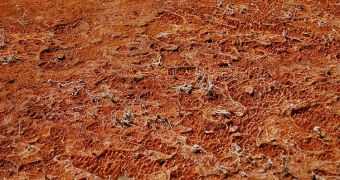Researchers from the Pennsylvania State University say that bacteria of the species Chryseobacterium and Paenisporosarcina may be able to endure on Mars. The microorganisms live in extremely difficult conditions here on Earth, at the bottom of glaciers in Antarctica and Greenland.
These are not the first places that come to mind when scientists think of hospitality. Only the hardiest, most evolved bacteria can endure at these locations, and only after having evolved at these locations for millions of years.
In a new series of experiments, the researchers simulated the conditions found in ice at these remote locations the best they could. They conducted accurate measurements in the field, primarily on the composition of nutrients underneath the ice fields.
It is very important for scientists to figure out how these bacteria are getting their energy from the environment. Overall, conditions underneath glaciers at these extreme locations are tremendously similar to those on the surface of Mars, minus the high degree of radiations present on the Red Planet.
The investigation was led by Penn State assistant professor of microbiology Corien Bakermans, who worked closely with Montana State University (MSU) associate professor of geology Mark Skidmore.
Together, the investigators established that Chryseobacterium and Paenisporosarcina were capable of respiration at temperatures ranging from minus 27 to 24 degrees Fahrenheit (minus 32 to minus 4 degrees Celsius).
The team also determined that the microorganisms were using a form of vinegar called acetate to obtain energy. Humans get their energy from sugars contained in the foods we eat. Just like us, bacteria use whatever they can, and then release carbon dioxide as a waste product.
“Although there are a lot of other factors involved for life to take hold on other planets, we can still say that if microbes on Earth can do this, then there's the potential, at least, that microbes can do this on Mars,” Bakermans explains.
The study, published in a recent issue of scientific journal Environmental Microbiology Reports, reports that bacterial respiration was proved possible at all temperature ranges the experts simulated.
The fact that bacteria appeared to prefer growing in cracks and crevices in the ice may explain why they can exchange nutrients in the first place. “It's hard for nutrients to be exchanged in the ice. But these channels appear to give the microbes access to nutrients,” Bakermans concludes.

 14 DAY TRIAL //
14 DAY TRIAL //